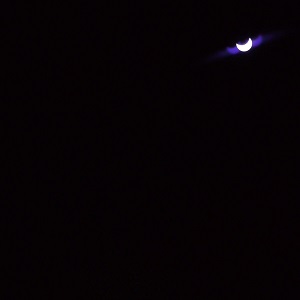How To Cure Our Soul, "Luna"
 On their second album as a duo, Marco Marzuoli and Alessandro Sergente lay out a reticulated blanket of pulsing guitar tones and modulated electronic pitches dedicated to the moon. Luna’s three programmatic tracks do a remarkably good job evoking their subject. Each one sounds like it has been washed in silver light and painted onto a blue-black canvas. Their shapes are uncertain, as much shadow as form, and they radiate with uneasy energy like they know they hide more than they reveal. Appropriately, the album's every sound hovers uneasily in place, shifting the air and color around it in long undulating waves both oceanic and astronomical.
On their second album as a duo, Marco Marzuoli and Alessandro Sergente lay out a reticulated blanket of pulsing guitar tones and modulated electronic pitches dedicated to the moon. Luna’s three programmatic tracks do a remarkably good job evoking their subject. Each one sounds like it has been washed in silver light and painted onto a blue-black canvas. Their shapes are uncertain, as much shadow as form, and they radiate with uneasy energy like they know they hide more than they reveal. Appropriately, the album's every sound hovers uneasily in place, shifting the air and color around it in long undulating waves both oceanic and astronomical.
Titles like "From the Village to the Country Under the Moonlight" and "Midnight: Song of Crickets on the Green Hill" bring to mind Luc Ferrari and Presque rien No. 1, less for their titles and more for their intent. Instead of grabbing a few microphones and setting out to capture an audio portrait of a moonlit landscape, Mazuoli and Sergente grabbed a guitar, some pedals, and a fistful of tape and set out to paint an abstract narrative—they call it a triptych—inspired by the quotidian and simultaneously magical passage of the moon through the night’s sky. The titles provide context where Ferrari’s sounds would normally do that job, only Luna doesn’t need much help. If the aforementioned songs fail to inspire images of villages or crickets, they evoke the sharp glow of the lunar surface and the curved shape of the Earth and its satellite with just a few carefully layered tones.
Timbre is the biggest contributor to that success. The guitars are glassy, lightweight, striking, almost uniformly smooth and still restless. It’s an optical illusion for the ears: pay attention to the pattern of the waves from peak to peak and the music will seem stationary. Focus on the descent and ascent of the wave and suddenly it’s an animated affair filled with trembling lines and nervous energy.
The careful application of interference helps too. Minor tones and a faint electrical texture, like the washed-out hue of an old television screen, complete the picture. There are rolling hills somewhere in these sounds, maybe crickets too, but more noticeable are the landscapes, the trees jutting up into the blackness of the sky, haloed by their own internal light, blurred shadows, white stone, and a grey presence that almost slips into daylight near the end. The details of a nocturnal stroll are lost in these wider strokes, but the mood of a place, and the mood of a kind of seeing, are captured with supernatural clarity.
samples:
- From the Village to the Country Under the Moonlight
- Midnight: Song of Crickets on the Green Hill
- Night Climb to the Mount Analogue
 



